(convert properties for internationnalized Wikifab) |
(update property name) |
||
| (7 révisions intermédiaires par 4 utilisateurs non affichées) | |||
| Ligne 1 : | Ligne 1 : | ||
| − | {{ | + | {{Tuto Details |
| − | | | + | |Main_Picture=Hmm ep15 concretewoodcoffeetable final.jpg |
| − | | | + | |Licences=Attribution-ShareAlike (CC BY-SA) |
| − | | | + | |Description=<translate><!--T:1--> DIY concrete and wood coffee table 36” long.</translate> |
| + | |Area=Furniture | ||
|Type=Creation | |Type=Creation | ||
| − | |||
| − | |||
|Difficulty=Medium | |Difficulty=Medium | ||
| + | |Duration=8 | ||
| + | |Duration-type=hour(s) | ||
|Cost=50 | |Cost=50 | ||
|Currency=USD ($) | |Currency=USD ($) | ||
| − | | | + | |Tags=Bois |
| − | | | + | |SourceLanguage=none |
| − | | | + | |Language=en |
| − | | | + | |IsTranslation=0 |
| + | }} | ||
| + | {{Introduction | ||
| + | |Introduction=<translate><!--T:24--> I found these 36” long in a DIY retail store, 1 ¼” square Fir balusters for $1.80 each. They're smooth, straight and have a nice grain so I decided to try and figure out how to make something with them. This DIY concrete and wood coffee table is the result. Even though the wood bottom looks quite intricate it's actually really easy to make. Just a few cross cuts with a circular saw is all that's needed to create the base. The assembly is done with finish screws. I casted white concrete into a melamine form to make the table top. It's as smooth and hard as stone but weighs about 100 lbs.</translate> | ||
| + | }} | ||
| + | {{TutoVideo | ||
| + | |TutoVideoService=youtube | ||
| + | |TutoVideoURL=https://www.youtube.com/watch?v=9Y3RkYtSCcY | ||
}} | }} | ||
| − | {{ | + | {{Materials |
| − | + | |Step_Picture_00=Hmm ep15 concretewoodcoffeetable supplies.jpg | |
| − | |Material=<translate>* White concrete | + | |Material=<translate><!--T:2--> |
| + | * White concrete | ||
* 36” long 1 ¼” square Fir Balusters | * 36” long 1 ¼” square Fir Balusters | ||
* ¾” Melamin board | * ¾” Melamin board | ||
* Scrap 2x4s or 2x2s | * Scrap 2x4s or 2x2s | ||
* 2 ¼” Trim Head Square Drive Screws</translate> | * 2 ¼” Trim Head Square Drive Screws</translate> | ||
| − | |Tools=* Cordless Drill | + | |Tools=<translate><!--T:25--> |
| + | * Cordless Drill | ||
* Circular Saw | * Circular Saw | ||
* Impact Driver | * Impact Driver | ||
| − | {{Info| | + | <!--T:26--> |
| − | + | {{Info|You can do this project with just a cordless drill, but having an impact driver to go along with it makes the project go much faster. A driver drill combo is great when you have to pre-drill holes for screws. This eliminates the need to constantly switch out bits.}}</translate> | |
| − | |||
| − | |||
}} | }} | ||
{{Separator}} | {{Separator}} | ||
| − | {{ | + | {{Tuto Step |
| − | |Step_Title=<translate>Cut balsuters</translate> | + | |Step_Title=<translate><!--T:3--> Cut balsuters</translate> |
| − | |Step_Content=<translate>Use a circular saw to cut four balusters into 12” length pieces and another four balusters into 18” length pieces.</translate> | + | |Step_Content=<translate><!--T:4--> Use a circular saw to cut four balusters into 12” length pieces and another four balusters into 18” length pieces.</translate> |
|Step_Picture_00=Hmm ep15 concretewoodcoffeetable step1.jpg | |Step_Picture_00=Hmm ep15 concretewoodcoffeetable step1.jpg | ||
}} | }} | ||
| − | {{ | + | {{Tuto Step |
| − | |Step_Title=<translate>Sand down the rough edges</translate> | + | |Step_Title=<translate><!--T:5--> Sand down the rough edges</translate> |
| − | |Step_Content=<translate>A few passes of sand paper are all that it takes to clean up the edges of the cut balusters.</translate> | + | |Step_Content=<translate><!--T:6--> A few passes of sand paper are all that it takes to clean up the edges of the cut balusters.</translate> |
|Step_Picture_00=Hmm ep15 concretewoodcoffeetable step2.jpg | |Step_Picture_00=Hmm ep15 concretewoodcoffeetable step2.jpg | ||
}} | }} | ||
| − | {{ | + | {{Tuto Step |
| − | |Step_Title=<translate>Build the form for the concrete table top</translate> | + | |Step_Title=<translate><!--T:7--> Build the form for the concrete table top</translate> |
| − | |Step_Content=<translate>The top should be 18” by 36” but use the balusters you cut and a right angle square to layout the top. Use scrap 2x4s or 2x2s as braces for screwing the melamine together.</translate> | + | |Step_Content=<translate><!--T:8--> The top should be 18” by 36” but use the balusters you cut and a right angle square to layout the top. Use scrap 2x4s or 2x2s as braces for screwing the melamine together.</translate> |
|Step_Picture_00=Hmm ep15 concretewoodcoffeetable step3a.jpg | |Step_Picture_00=Hmm ep15 concretewoodcoffeetable step3a.jpg | ||
|Step_Picture_01=Hmm ep15 concretewoodcoffeetable step3b.jpg | |Step_Picture_01=Hmm ep15 concretewoodcoffeetable step3b.jpg | ||
|Step_Picture_02=Hmm ep15 concretewoodcoffeetable step3c.jpg | |Step_Picture_02=Hmm ep15 concretewoodcoffeetable step3c.jpg | ||
}} | }} | ||
| − | {{ | + | {{Tuto Step |
| − | |Step_Title=<translate>Seal and clean the form</translate> | + | |Step_Title=<translate><!--T:9--> Seal and clean the form</translate> |
| − | |Step_Content=<translate>Use latex or silicone caulk to seal the form. Once the caulking is dry, wipe the form to remove dust and dirt before pouring in the concrete.</translate> | + | |Step_Content=<translate><!--T:10--> Use latex or silicone caulk to seal the form. Once the caulking is dry, wipe the form to remove dust and dirt before pouring in the concrete.</translate> |
}} | }} | ||
| − | {{ | + | {{Tuto Step |
| − | |Step_Title=<translate>Mix and pour the concrete</translate> | + | |Step_Title=<translate><!--T:11--> Mix and pour the concrete</translate> |
| − | |Step_Content=<translate>It's easy to work with the white concrete mix and has no large pieces of aggregate. This mix is easier to work with but sets up faster so you'll need to work quickly. I used about 1 ½ bags and didn’t use any reinforcement. The top came out about 2” thick and is quite strong.</translate> | + | |Step_Content=<translate><!--T:12--> It's easy to work with the white concrete mix and has no large pieces of aggregate. This mix is easier to work with but sets up faster so you'll need to work quickly. I used about 1 ½ bags and didn’t use any reinforcement. The top came out about 2” thick and is quite strong.</translate> |
|Step_Picture_00=Hmm ep15 concretewoodcoffeetable step5.jpg | |Step_Picture_00=Hmm ep15 concretewoodcoffeetable step5.jpg | ||
}} | }} | ||
| − | {{ | + | {{Tuto Step |
| − | |Step_Title=<translate>Pack down the concrete and vibrate the form</translate> | + | |Step_Title=<translate><!--T:13--> Pack down the concrete and vibrate the form</translate> |
| − | |Step_Content=<translate>Make sure the wet concrete is pack down into every corner and vibrate the form with a hammer.</translate> | + | |Step_Content=<translate><!--T:14--> Make sure the wet concrete is pack down into every corner and vibrate the form with a hammer.</translate> |
|Step_Picture_00=Hmm ep15 concretewoodcoffeetable step6.jpg | |Step_Picture_00=Hmm ep15 concretewoodcoffeetable step6.jpg | ||
}} | }} | ||
| − | {{ | + | {{Tuto Step |
| − | |Step_Title=<translate>Let the concrete cure</translate> | + | |Step_Title=<translate><!--T:15--> Let the concrete cure</translate> |
| − | |Step_Content=<translate>Let the concrete cure for at least 48 hours before removing the form. The manufacturer suggests covering the concrete to control moisture but I didn't and it came out just fine.</translate> | + | |Step_Content=<translate><!--T:16--> Let the concrete cure for at least 48 hours before removing the form. The manufacturer suggests covering the concrete to control moisture but I didn't and it came out just fine.</translate> |
|Step_Picture_00=Hmm ep15 concretewoodcoffeetable step7.jpg | |Step_Picture_00=Hmm ep15 concretewoodcoffeetable step7.jpg | ||
}} | }} | ||
| − | {{ | + | {{Tuto Step |
| − | |Step_Title=<translate>Remove the form</translate> | + | |Step_Title=<translate><!--T:17--> Remove the form</translate> |
| − | |Step_Content=<translate>Unscrew the formwork and scrap off any of the caulk that is stuck to the concrete.</translate> | + | |Step_Content=<translate><!--T:18--> Unscrew the formwork and scrap off any of the caulk that is stuck to the concrete.</translate> |
|Step_Picture_00=Hmm ep15 concretewoodcoffeetable step8a.jpg | |Step_Picture_00=Hmm ep15 concretewoodcoffeetable step8a.jpg | ||
|Step_Picture_01=Hmm ep15 concretewoodcoffeetable step8b.jpg | |Step_Picture_01=Hmm ep15 concretewoodcoffeetable step8b.jpg | ||
}} | }} | ||
| − | {{ | + | {{Tuto Step |
| − | |Step_Title=<translate>Build the Base</translate> | + | |Step_Title=<translate><!--T:19--> Build the Base</translate> |
| − | |Step_Content=<translate>I used 1 screw in each side of each baluster. Even though each joint by itself isn't strong the resulting framework is quite sturdy. To keep the balusters from splitting drill pilot holes before screwing.</translate> | + | |Step_Content=<translate><!--T:20--> I used 1 screw in each side of each baluster. Even though each joint by itself isn't strong the resulting framework is quite sturdy. To keep the balusters from splitting drill pilot holes before screwing.</translate> |
}} | }} | ||
| − | {{ | + | {{Tuto Step |
| − | |Step_Title=<translate>Put on the top</translate> | + | |Step_Title=<translate><!--T:21--> Put on the top</translate> |
| − | |Step_Content=<translate>The concrete top is quite heavy and doesn’t slide but I put a couple screws up through the wood and into the concrete about 3/8” anyway.</translate> | + | |Step_Content=<translate><!--T:22--> The concrete top is quite heavy and doesn’t slide but I put a couple screws up through the wood and into the concrete about 3/8” anyway.</translate> |
|Step_Picture_00=Hmm ep15 concretewoodcoffeetable step10.jpg | |Step_Picture_00=Hmm ep15 concretewoodcoffeetable step10.jpg | ||
|Step_Picture_01=Hmm ep15 concretewoodcoffeetable option1.jpg | |Step_Picture_01=Hmm ep15 concretewoodcoffeetable option1.jpg | ||
| Ligne 87 : | Ligne 95 : | ||
|Step_Picture_05=Hmm ep15 concretewoodcoffeetable option5.jpg | |Step_Picture_05=Hmm ep15 concretewoodcoffeetable option5.jpg | ||
}} | }} | ||
| − | {{ | + | {{Notes |
| − | |Notes=<translate>* This project is also available [http://homemade-modern.com/ep15-concrete-wood-coffee-table/ on my blog] | + | |Notes=<translate><!--T:23--> |
| + | * This project is also available [http://homemade-modern.com/ep15-concrete-wood-coffee-table/ on my blog] | ||
* Watch the video tutorial of this standing desk on [https://www.youtube.com/watch?v=9Y3RkYtSCcY my Youtube channel] | * Watch the video tutorial of this standing desk on [https://www.youtube.com/watch?v=9Y3RkYtSCcY my Youtube channel] | ||
| + | }} | ||
| + | {{Tuto Status | ||
| + | |Complete=Published | ||
}} | }} | ||
{{Tuto_Status</translate> | {{Tuto_Status</translate> | ||
| − | |Complete= | + | |Complete=Published |
}} | }} | ||
Version actuelle datée du 9 décembre 2019 à 12:29
Sommaire
- 1 Introduction
- 2 Video d'introduction
- 3 Étape 1 - Cut balsuters
- 4 Étape 2 - Sand down the rough edges
- 5 Étape 3 - Build the form for the concrete table top
- 6 Étape 4 - Seal and clean the form
- 7 Étape 5 - Mix and pour the concrete
- 8 Étape 6 - Pack down the concrete and vibrate the form
- 9 Étape 7 - Let the concrete cure
- 10 Étape 8 - Remove the form
- 11 Étape 9 - Build the Base
- 12 Étape 10 - Put on the top
- 13 Notes et références
- 14 Commentaires
Introduction
Étape 1 - Cut balsuters
Use a circular saw to cut four balusters into 12” length pieces and another four balusters into 18” length pieces.
Étape 2 - Sand down the rough edges
A few passes of sand paper are all that it takes to clean up the edges of the cut balusters.
Étape 3 - Build the form for the concrete table top
The top should be 18” by 36” but use the balusters you cut and a right angle square to layout the top. Use scrap 2x4s or 2x2s as braces for screwing the melamine together.
Étape 4 - Seal and clean the form
Use latex or silicone caulk to seal the form. Once the caulking is dry, wipe the form to remove dust and dirt before pouring in the concrete.
Étape 5 - Mix and pour the concrete
It's easy to work with the white concrete mix and has no large pieces of aggregate. This mix is easier to work with but sets up faster so you'll need to work quickly. I used about 1 ½ bags and didn’t use any reinforcement. The top came out about 2” thick and is quite strong.
Étape 6 - Pack down the concrete and vibrate the form
Make sure the wet concrete is pack down into every corner and vibrate the form with a hammer.
Étape 7 - Let the concrete cure
Let the concrete cure for at least 48 hours before removing the form. The manufacturer suggests covering the concrete to control moisture but I didn't and it came out just fine.
Étape 8 - Remove the form
Unscrew the formwork and scrap off any of the caulk that is stuck to the concrete.
Étape 9 - Build the Base
I used 1 screw in each side of each baluster. Even though each joint by itself isn't strong the resulting framework is quite sturdy. To keep the balusters from splitting drill pilot holes before screwing.
Étape 10 - Put on the top
The concrete top is quite heavy and doesn’t slide but I put a couple screws up through the wood and into the concrete about 3/8” anyway.
Notes et références
- This project is also available on my blog
- Watch the video tutorial of this standing desk on my Youtube channel
Published Published
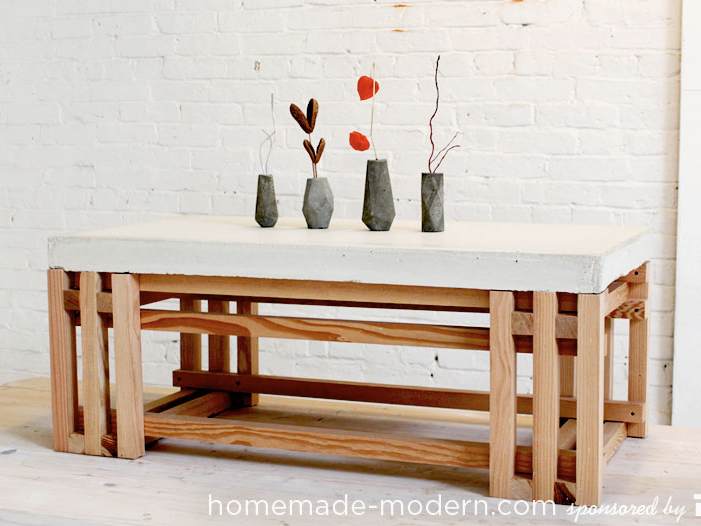
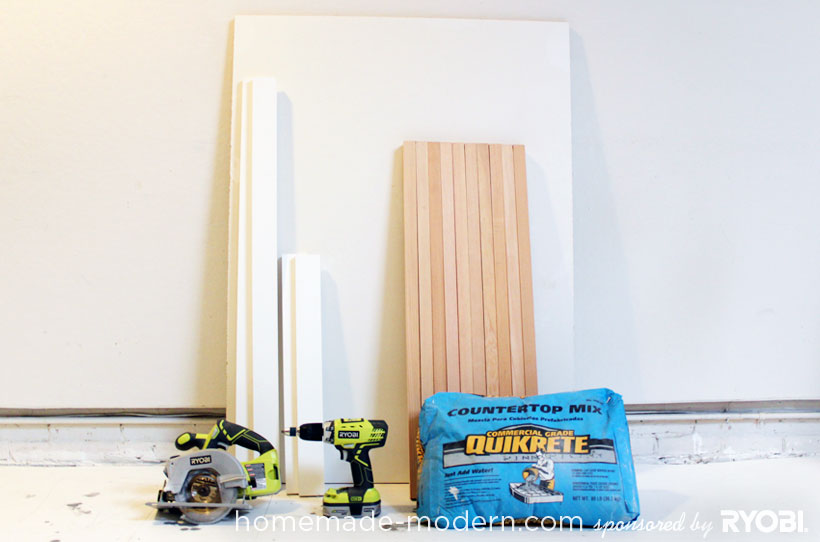
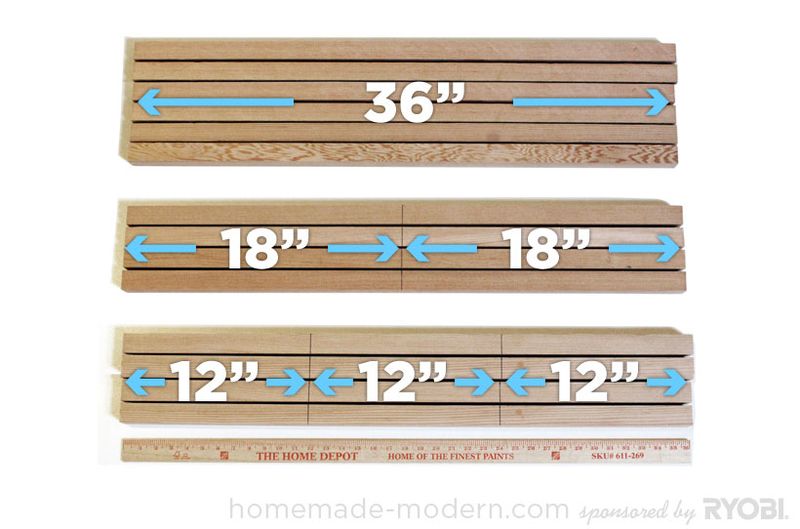
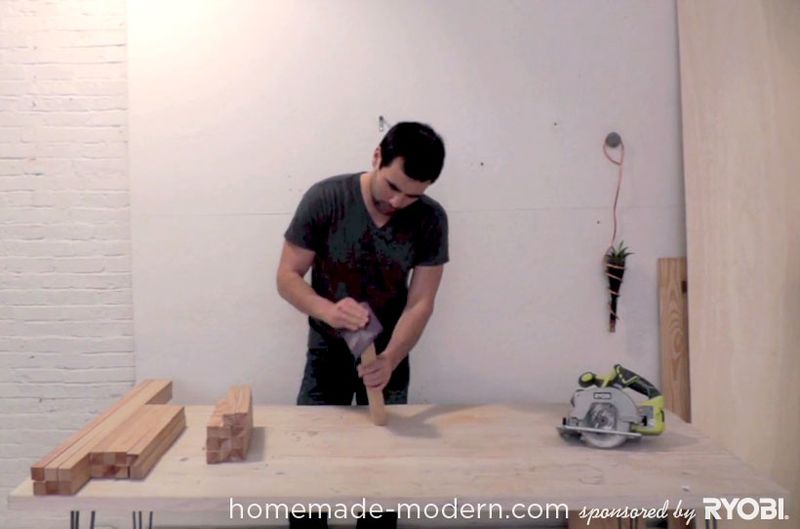
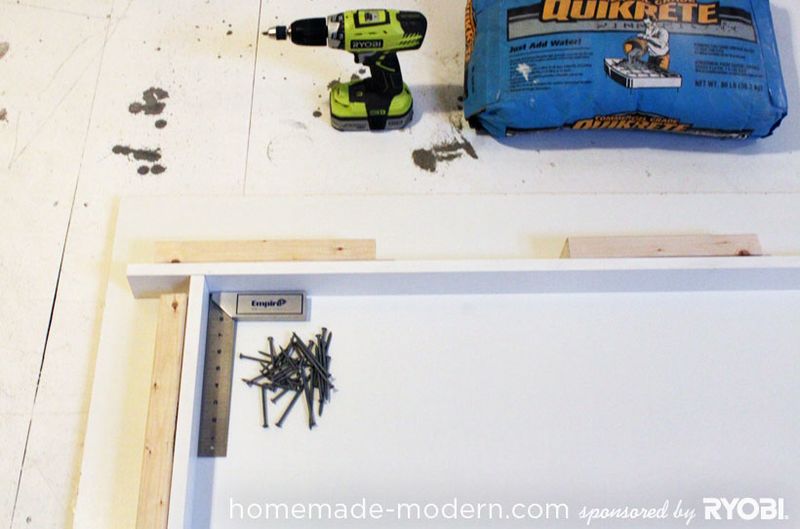
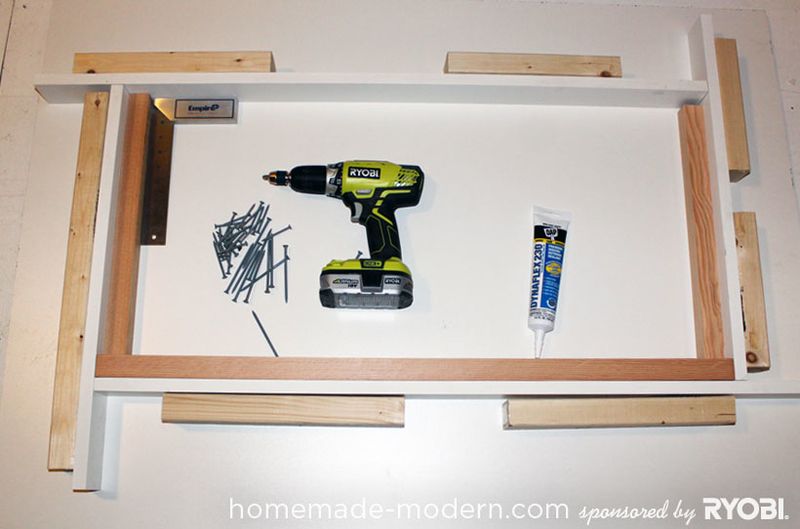
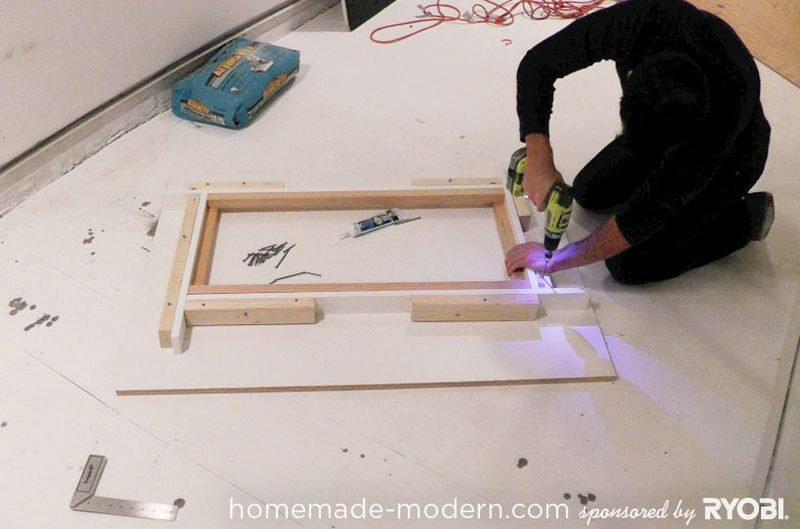
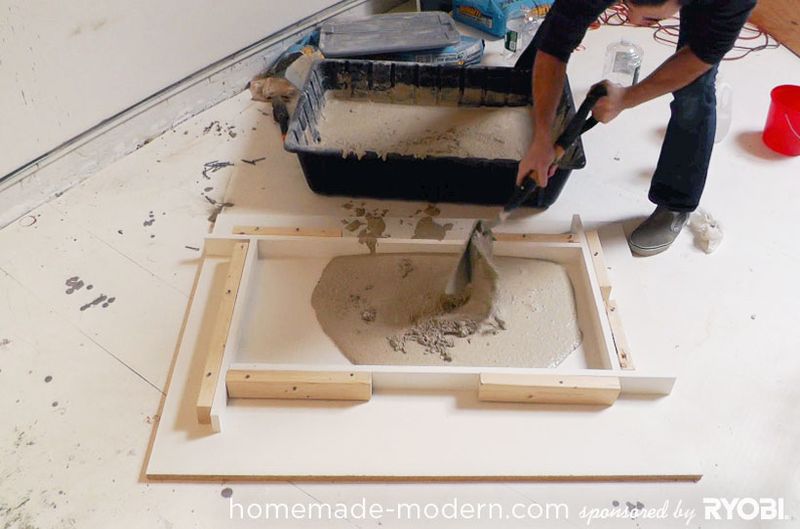
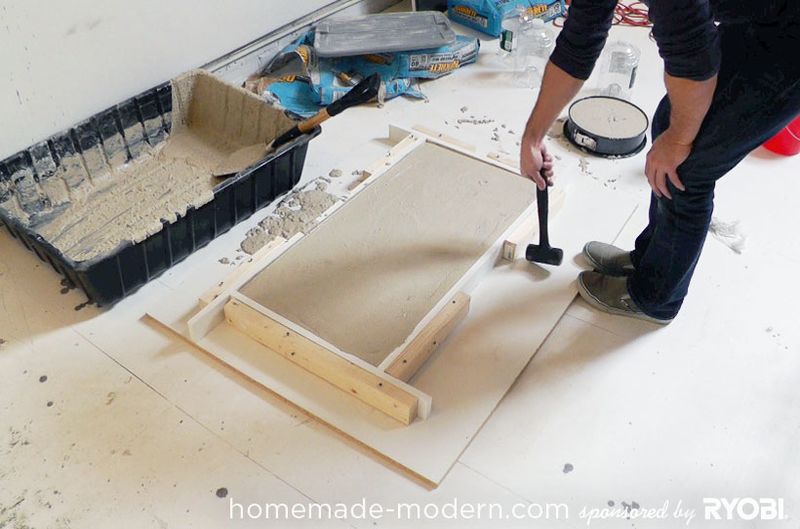
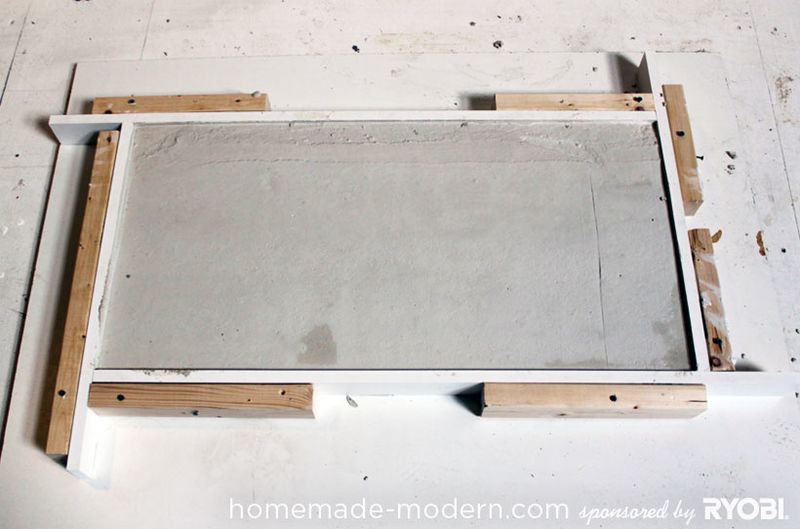
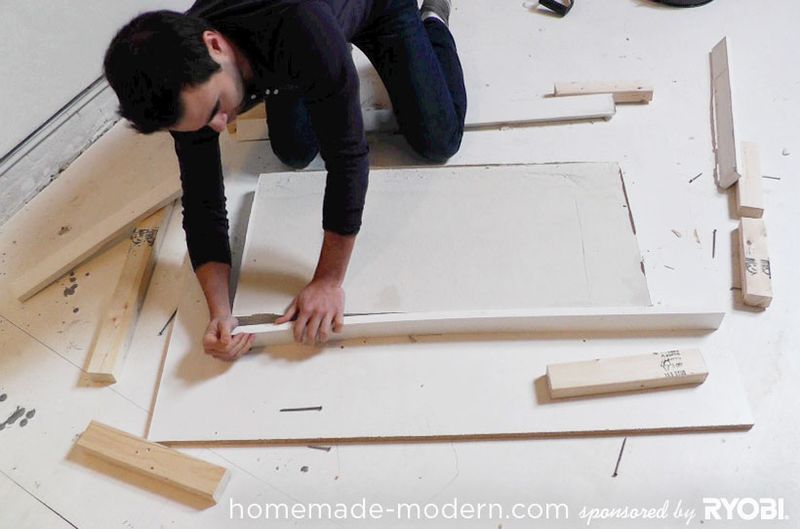
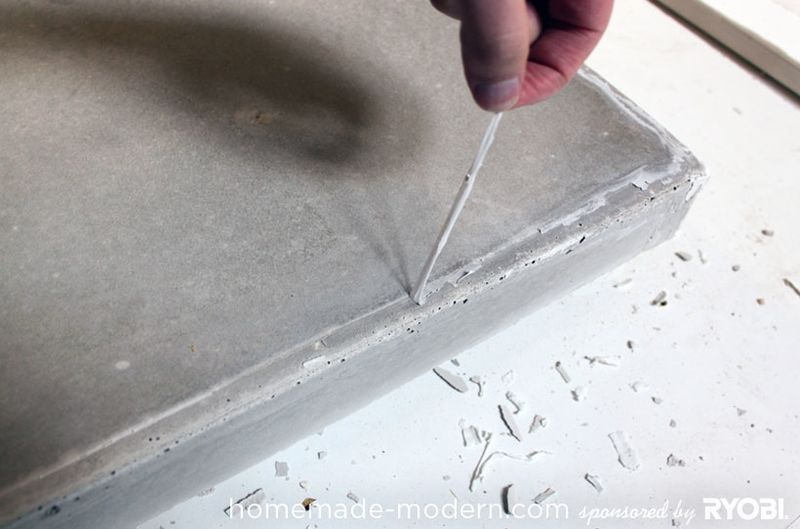
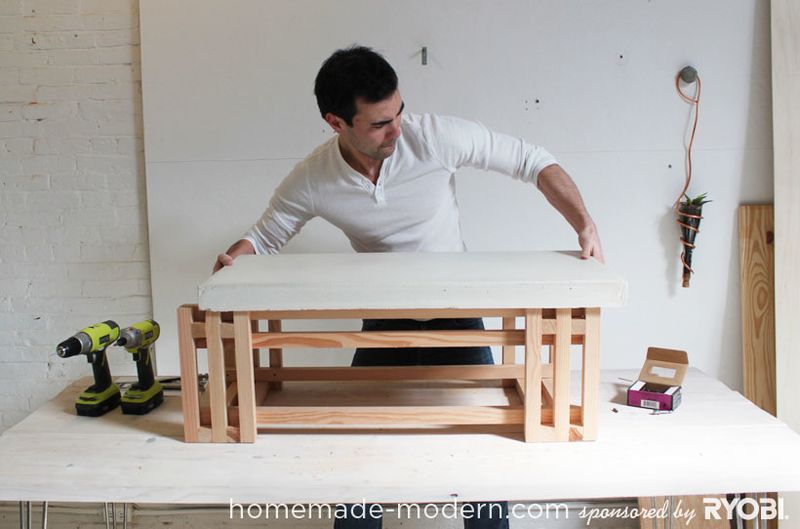
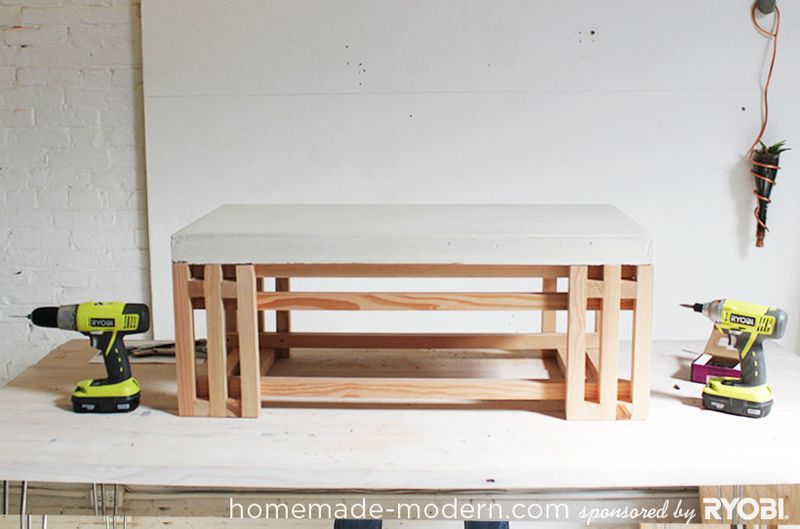
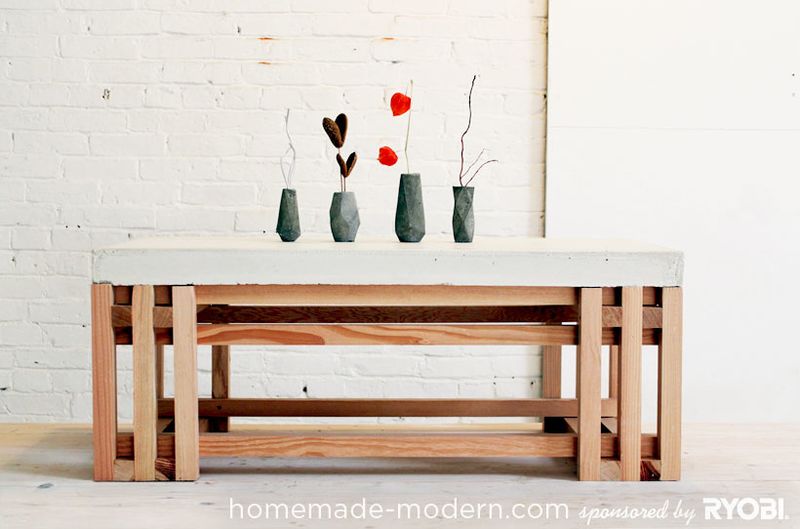
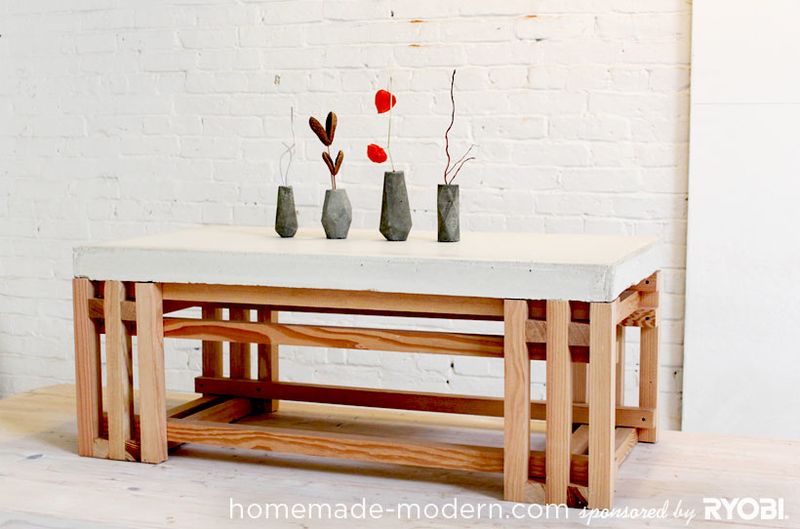
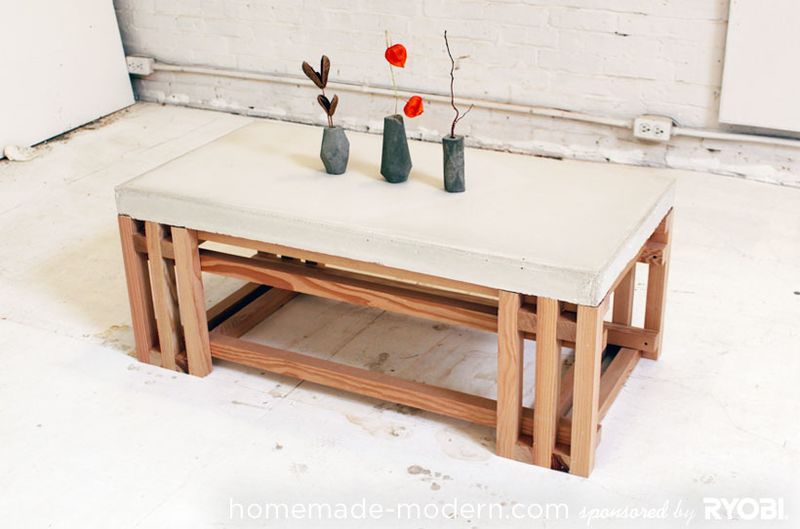
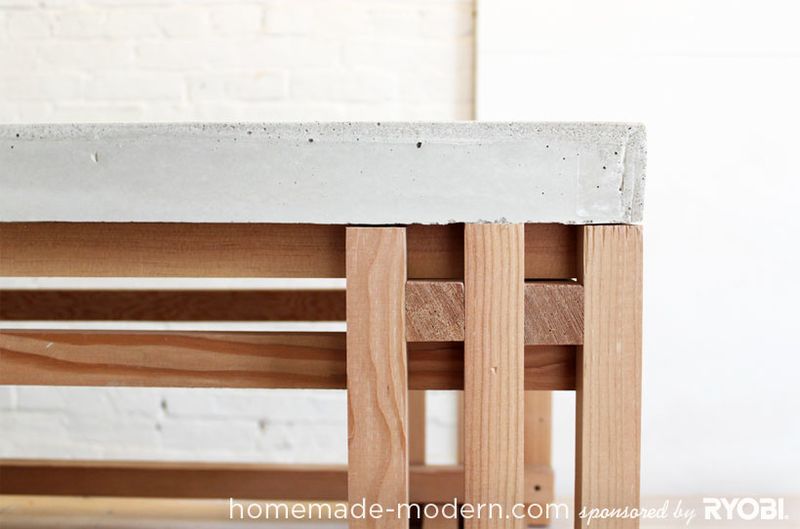
 Français
Français English
English Deutsch
Deutsch Español
Español Italiano
Italiano Português
Português